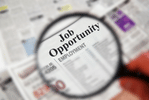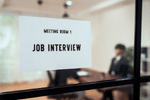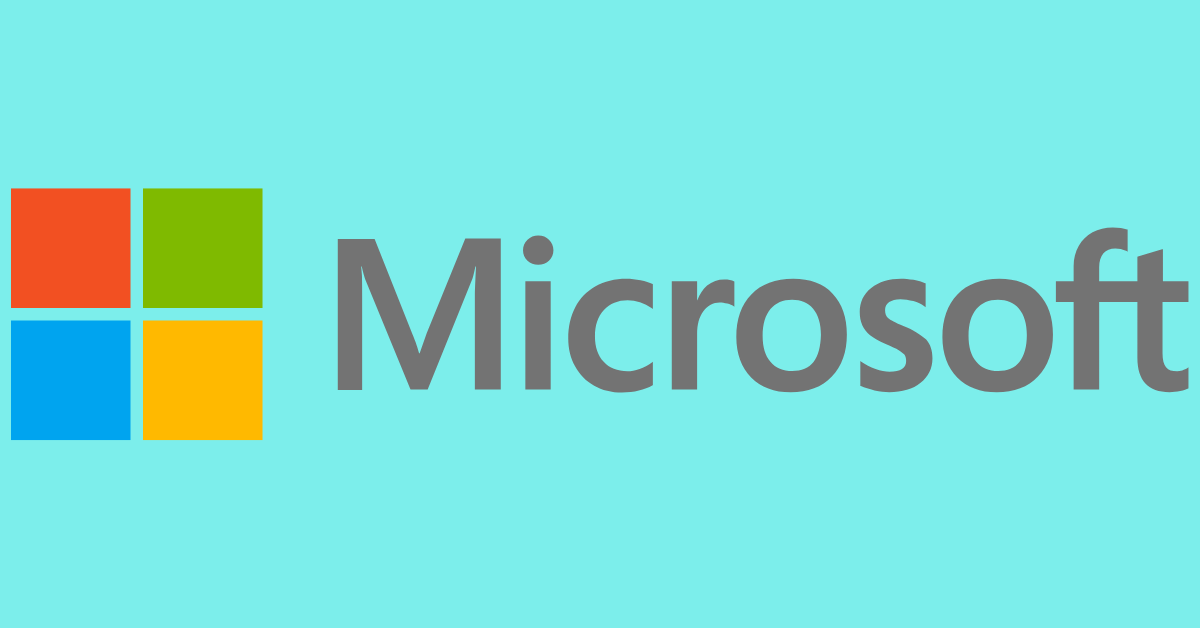Landing a job at Microsoft isn’t just about joining one of the world’s leading tech companies – it’s about becoming part of a legacy that’s shaped the digital world as we know it. But let’s be honest: the interview process can feel like navigating through Windows 95 for the first time (remember those days?). Don’t worry, though – we’re here to help you click all the right buttons.
Boost Your Interview Skills Now
Improve your interview skills in under 10 minutes!
Join thousands of successful job seekers!

Introduction to the Microsoft Interview Process
Microsoft’s interview process is unique, and for good reason. They’re not just looking for technical wizards who can code in their sleep (though that wouldn’t hurt!). They’re searching for individuals who embody their growth mindset culture and can help drive innovation for billions of users worldwide.
What makes Microsoft’s interview process particularly challenging? First, there’s the comprehensive evaluation process that tests everything from your technical skills to your ability to explain complex concepts to your grandmother. Then there’s the famous problem-solving focus – Microsoft wants to see not just what you know, but how you think.
But here’s the exciting part: if you’re reading this, you’re already taking the first step toward joining a company that’s been at the forefront of technology for decades. Whether you dream of working on Azure’s cloud infrastructure, developing the next generation of Xbox games, or revolutionizing Microsoft Teams, the journey starts with understanding the interview process.

Overview of the Microsoft Hiring Process
Let’s break down the journey from application to offer letter – think of it as your personal roadmap to success.
Application Submission
Your first impression matters, and in this case, it’s digital. Your resume and cover letter are like your personal marketing campaign, and you need to make them count. Here’s how to make your application stand out:
- Tailor your resume to Microsoft’s values: Highlight experiences that demonstrate growth mindset, innovation, and collaboration
- Use metrics and achievements: Instead of saying “improved system performance,” write “reduced load times by 40% through optimization”
- Keywords are key: Incorporate relevant technical skills and tools mentioned in the job description
- Keep it clean and professional: Like well-written code, your resume should be clean, organized, and easy to scan
Phone Screen
The technical phone interview is your first real conversation with Microsoft, and it’s more than just a casual chat. This 30-45 minute call is your chance to demonstrate why you’re perfect for the role.
What to expect:
- Technical validation: Basic coding questions or role-specific technical concepts
- Background discussion: Deep dives into your experience and major projects
- Cultural alignment: Questions about teamwork and problem-solving approaches
Here’s how to ace this stage:
- Find a quiet space with reliable phone reception or internet connection
- Have your resume handy and be ready to discuss any project you’ve listed
- Prepare concise stories about your achievements and challenges
- Be ready for some basic technical questions – they’re testing if you can think on your feet
Remember: The phone screener is also your chance to ask questions. Having thoughtful questions prepared shows your genuine interest in Microsoft and the role.
Common phone screen questions include:
- “Tell me about a challenging project you worked on recently.”
- “Why Microsoft?”
- “How do you keep up with the latest technology trends?”

Types of Interviews at Microsoft
Ready to dive deeper into what awaits you behind those virtual (or physical) Microsoft interview doors? Let’s break down each type of interview you might encounter. Think of these as different levels in a game – each with its own challenges and winning strategies.
Technical Interviews
Ah, the famous Microsoft technical interviews! These are where you’ll flex your problem-solving muscles and show off your coding prowess.
But here’s a secret: it’s not just about getting the right answer – it’s about demonstrating your thought process.
What to expect:
- Whiteboarding sessions (virtual or in-person)
- Data structure and algorithm problems
- System design discussions (especially for senior roles)
- Code optimization challenges
Here’s how these typically unfold:
- Problem presentation: You’ll receive a technical problem to solve
- Clarification phase: This is crucial! Ask questions about requirements and constraints
- Solution design: Explain your approach before diving into code
- Implementation: Write clean, efficient code while explaining your choices
- Optimization: Discuss time/space complexity and potential improvements
Practice thinking aloud while coding. It’s like being a TV chef – you need to cook and explain what you’re doing at the same time!
Boost Your Interview Skills Now
Improve your interview skills in under 10 minutes!
Join thousands of successful job seekers!
Behavioral Interviews
Microsoft isn’t just hiring your technical skills – they’re hiring the whole package. Behavioral interview questions assess how well you’ll fit into Microsoft’s collaborative culture and handle real-world challenges.
What Microsoft Looks For:
- Growth Mindset: Show how you learn from failures and adapt to changes
- Leadership: Even in junior roles, they want to see leadership potential
- Collaboration: Demonstrate your ability to work in diverse teams
- Problem-solving beyond code: How do you handle conflicts and challenges?
- Communication Skills: Effectively articulate your thought process and demonstrate good communication skills throughout assessments
Here’s a framework for crafting compelling behavioral responses:
STAR Method:
Situation – Set the scene
Task – Describe your challenge
Action – Explain your solution
Result – Share the outcome
Here are some sample behavioral questions with brief response strategies:
“Tell me about a time you disagreed with a team member”
Focus on: Professional resolution and positive outcomes
Emphasize: Communication and compromise
Avoid: Placing blame or speaking negatively
“Describe a project that failed”
Highlight: Lessons learned and subsequent improvements
Show: Ownership and resilience
Include: Specific changes you implemented afterward
Domain-Specific Interviews
These interviews dig deep into your technical skill and expertise in particular areas. Whether you’re a cloud computing guru or a machine learning enthusiast, be ready to demonstrate your specialized knowledge.
Key areas often covered:
- Cloud Computing: Azure architecture and services
- AI/ML: Model development and deployment
- Security: Threat modeling and mitigation
- UI/UX: User-centered design principles
Microsoft values depth and breadth. While you should be an expert in your domain, showing understanding of how your work impacts other areas is a big plus.

Commonly Asked Microsoft Interview Questions
Let’s dive into the questions you’re likely to face. Remember, these aren’t just questions – they’re opportunities to showcase your potential!
Behavioral Questions with Sample Answers
“Tell me about a time you had to influence someone without having direct authority.”
“While working on a cross-functional project at my previous company, I needed the marketing team’s support for a crucial feature launch, despite not being their manager. I noticed they were hesitant because they didn’t understand the technical impact. So, I created a simple demo showing how the feature would increase user engagement by 40% and reduce their manual workflow by 5 hours per week. By focusing on their pain points and backing it with data, I got their enthusiastic buy-in. The launch was successful, and this approach became our standard for cross-team collaboration.”
“Describe a situation where you had to make a difficult technical decision with limited information.”
“During a critical service outage, we had to choose between rolling back a major deployment or trying to debug in production. With only 15 minutes to decide and partial logging data, I gathered our senior engineers for a quick huddle. I structured our decision-making by listing our known risks: customer data integrity, downtime duration, and resource allocation. Given that our rollback process was well-tested and would take 10 minutes versus an unknown debugging timeframe, I chose the rollback. This decision minimized our downtime to 30 minutes total. Afterward, I implemented better monitoring and established clearer incident response protocols.”
“How do you handle receiving negative feedback?”
“Last quarter, my manager pointed out that my technical documentation wasn’t detailed enough for junior team members. Instead of getting defensive, I asked for specific examples and scheduled meetings with junior developers to understand their needs. I created documentation templates that included common gotchas and troubleshooting guides. Now our team’s onboarding time has decreased by 30%, and my manager uses my documentation approach as a best practice example.”
“Tell me about a time you had to manage competing priorities during on site interviews.”
“I was leading our authentication service upgrade while also supporting a critical client implementation. I created a priority matrix based on impact and urgency, then broke down both projects into smaller milestones. I negotiated with stakeholders to adjust non-critical deadlines and brought in a junior developer to handle routine maintenance. I also set up automated testing to reduce manual QA time. Both projects succeeded, with the auth service deployment completing two days early and the client implementation meeting all SLAs.”
“How have you handled a major mistake you made?”
“I once pushed code that included a memory leak in our payment processing service. When I discovered it, I immediately alerted my manager and the DevOps team. Instead of just fixing the bug, I took ownership by: 1) Creating a detailed incident report, 2) Implementing additional memory monitoring alerts, 3) Developing a pre-deployment checklist that our team now uses. The transparency and proactive approach actually strengthened my team’s trust, and we haven’t had a similar incident since.”
Technical Questions (Core Areas to Prepare)
“Design a URL shortener system”
Key considerations:
- Hash function selection
- Collision handling
- Database scaling
- Cache implementation
- Analytics tracking
“Implement a LRU Cache”
Focus points:
- Data structure choice (HashMap + DoubleLinkedList)
- Time complexity analysis
- Edge cases
- Memory optimization
“Design Twitter’s trending topics feature”
Important aspects:
- Real-time processing
- Data aggregation
- Memory vs speed tradeoffs
- Geographic partitioning
“Find all palindromic substrings in a string”
Preparation areas:
- Dynamic programming approach
- Space optimization
- Time complexity analysis
- Edge cases (empty string, single character)
“Design a distributed job scheduler”
Key elements:
- Fault tolerance
- Load balancing
- Task prioritization
- Monitoring and logging
Role-Specific Questions
- For Product Managers: “How would you improve Microsoft Teams for educational institutions?”
- For Cloud Solutions Architects: “How would you migrate a legacy on-premise application to Azure?”
- For Data Scientists: “How would you detect anomalies in Azure cloud service usage?”
- For Security Engineers: “How would you implement Zero Trust architecture in a hybrid cloud environment?”
- For UX Designers: “How would you redesign the Office 365 dashboard for power users?”
Pro Tips for Answering These Questions:
- Follow the STAR method religiously for behavioral questions
- Ask clarifying questions before jumping into technical solutions
- Think out loud during problem-solving questions
- Have metrics and data ready for your behavioral examples
- Practice whiteboarding virtually and physically
- Keep your answers focused but comprehensive (aim for 2-3 minutes per behavioral response)
- Show enthusiasm about Microsoft’s products and mission
Remember: These questions are just starting points. The interviewer might dig deeper into any aspect of your answers, so be prepared to elaborate on any point you make!

Common Pitfalls to Avoid
Technical Interview Mistakes
❌ Don’t: Jump into coding without a plan ✅ Do: Discuss your approach first, get buy-in
❌ Don’t: Stay silent when stuck ✅ Do: Verbalize your thought process, ask clarifying questions
Behavioral Interview Mistakes
❌ Don’t: Give generic answers ✅ Do: Use specific examples with metrics and outcomes
❌ Don’t: Speak negatively about previous employers ✅ Do: Focus on learning experiences and growth
What Impressed Interviewers Most
From actual Microsoft hiring managers:
- “Candidates who showed curiosity about our team’s challenges”
- “Those who admitted when they didn’t know something but showed how they’d find out”
- “People who demonstrated their growth mindset with real examples”
Bonus Tips: The Small Things That Matter
Virtual Interview Success
- Test your setup 24 hours before
- Use a high-quality microphone
- Have backup internet ready
- Keep water and a notebook handy
- Use proper lighting (face the light source)
In-Person Interview Tips
- Arrive 30 minutes early
- Bring multiple copies of your resume
- Pack dry-erase markers (different colors)
- Have a light meal before starting
- Bring a water bottle

Frequently Asked Questions About the Microsoft Interview Process
Let’s tackle those burning questions keeping you up at night. Think of this as your pre-interview anxiety antidote!
Timeline and Process Questions
For virtual interviews:
- Backup device ready
- External microphone
- Secondary internet connection
- Digital copy of resume

Final Tips for Success
The Night Before
✅ Do:
- Get enough sleep
- Review your STAR stories
- Prepare your outfit
- Test all technical equipment
- Set multiple alarms
❌ Don’t:
- Cram new technical concepts
- Stay up late practicing
- Drink alcohol
- Skip dinner
Interview Day Power Moves
First Impression Strategy
- Arrive 5 minutes early to each virtual meeting
- Start with a strong personal introduction
- Keep energy high but authentic
Communication Tips
- Use the STAR method naturally
- Incorporate Microsoft’s products in examples
- Show enthusiasm for technology
Closing Strong
- Have 2-3 thoughtful questions ready
- Thank interviewer by name
- Ask about next steps
After the Interview
- Send a thank-you email within 24 hours
- Reflect on areas for improvement
- Stay in touch with your recruiter
- Be patient but follow up after one week
Remember, Microsoft is looking for more than just technical skills – they want innovators, problem-solvers, and future leaders. Your preparation shows them you’re serious about joining their mission to empower every person and organization on the planet to achieve more.
Final Encouragement
You’ve made it to the end of this guide, which shows you have the dedication it takes to succeed at Microsoft. Stay confident, be authentic, and remember: every current Microsoft employee was once in your position. They’re not looking for perfection – they’re looking for potential and passion.
Now go show them what you’ve got! And remember, whether you’re designing the next feature for Windows, optimizing Azure’s infrastructure, or creating innovative solutions with AI, your journey to Microsoft starts with believing in yourself.
Good luck!
Boost Your Interview Skills Now
Improve your interview skills in under 10 minutes!
Join thousands of successful job seekers!




